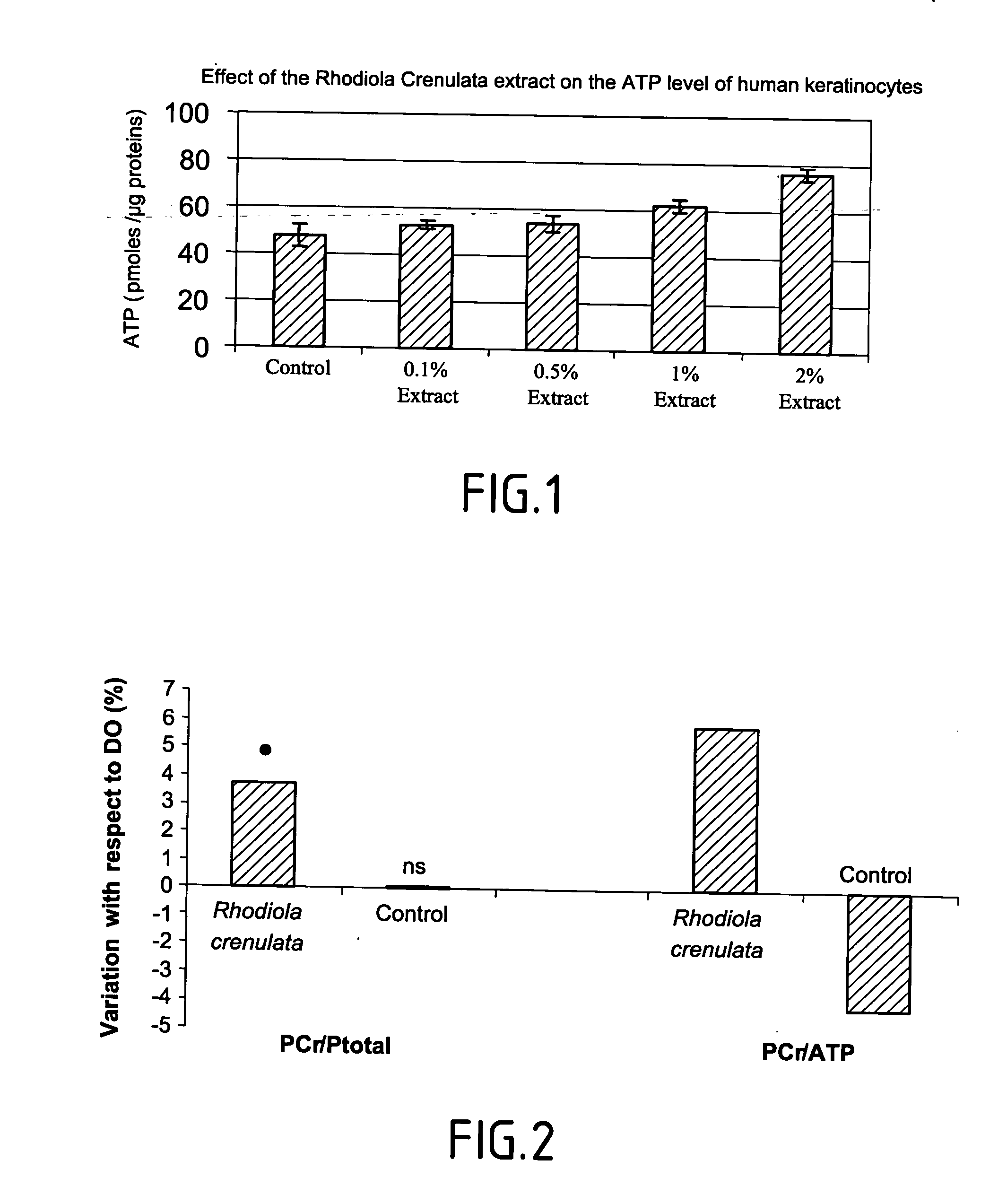Use of Rhodiola crenulata extract via the topical route
a technology of rhodiola crenulata and extract, which is applied in the field of topical use of rhodiola crenulata extract, can solve the problems of inability to draw any teaching, inability to solve the problems brought about by various problems, and inability to study, so as to improve the plasticity reduce the risk of infection, and prevent the loosening of the cutaneous tissue
- Summary
- Abstract
- Description
- Claims
- Application Information
AI Technical Summary
Benefits of technology
Problems solved by technology
Method used
Image
Examples
example 1
Preparation of a Rhodiola crenulata Extract
A Rhodiola crenulata extract was made from roots which were cut, and then ground into a powder. The powder obtained was mixed with ethanol in order to obtain a 10% (w / w) solution in ethanol. This solution was brought to reflux. The extraction was carried out for 1 hour, and the solution was then brought to ambient temperature and was filtered, and the ethanol was removed. The result was dissolved at 5% (w / w) in a water / glycol 75 / 25 (w / w) mixture, and was then ultrafiltered on a ceramic filter having various cut-off thresholds, and was then finally filtered at 0.45 μm.
0.1% of methyl paraben, used as preservative, was then added last in the presence or not of a xanthan gel.
example 2
Preparation of a Rhodiola crenulata Extract
A Rhodiola crenulata extract was made from roots which were cut, and then ground into a powder. The powder obtained was mixed with cyclohexane in order to obtain a 10% (w / w) solution in cyclohexane. This solution was brought to reflux. The extraction was carried out for 24 hours, and the solution was then brought to ambient temperature and was filtered, and the cyclohexane was removed. The result was dissolved at 5% (w / w) in a water / glycol 75 / 25 (w / w) mixture, and was then ultrafiltered on ceramic filters having various cut-off thresholds, and was then finally filtered at 0.45 μm.
0.1% of methyl paraben, used as preservative, was then added last in the presence or not of a carbomer gel.
example 3
Preparation of a Rhodiola crenulata Extract
A Rhodiola crenulata extract was made from roots which were cut, and then ground into a powder. The powder obtained was mixed in a solvent made up of 75% water and 25% butylene glycol, in order to obtain a 10% (w / w) solution in the solvent. Soaking was allowed for 1 night at 45° C., and the solution was then ultrafiltered on ceramic filters having various cut-off thresholds, and was then finally filtered at 0.45 μm.
0.1% of methyl paraben, used as preservative, was then added last in the presence or not of a cellulose gel.
PUM
 Login to View More
Login to View More Abstract
Description
Claims
Application Information
 Login to View More
Login to View More - R&D
- Intellectual Property
- Life Sciences
- Materials
- Tech Scout
- Unparalleled Data Quality
- Higher Quality Content
- 60% Fewer Hallucinations
Browse by: Latest US Patents, China's latest patents, Technical Efficacy Thesaurus, Application Domain, Technology Topic, Popular Technical Reports.
© 2025 PatSnap. All rights reserved.Legal|Privacy policy|Modern Slavery Act Transparency Statement|Sitemap|About US| Contact US: help@patsnap.com


